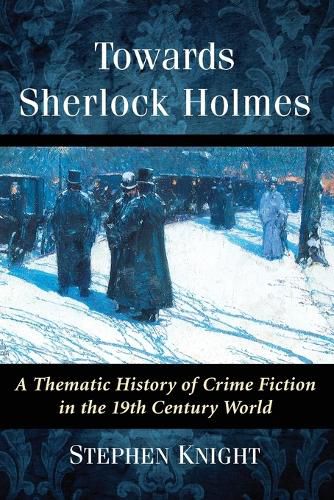Readings Newsletter
Become a Readings Member to make your shopping experience even easier.
Sign in or sign up for free!
You’re not far away from qualifying for FREE standard shipping within Australia
You’ve qualified for FREE standard shipping within Australia
The cart is loading…






This title is printed to order. This book may have been self-published. If so, we cannot guarantee the quality of the content. In the main most books will have gone through the editing process however some may not. We therefore suggest that you be aware of this before ordering this book. If in doubt check either the author or publisher’s details as we are unable to accept any returns unless they are faulty. Please contact us if you have any questions.
Crime fiction was a creation of the modern world and its suddenly growing cities, when in both reality and fiction specialists emerged to identify criminals and protect the anxious, isolated citizens. At first they tended to be lawyers, but then detectives, both amateurs and police, came to play a central role.
The development of crime fiction has its own mysteries. The book explores theme-focused aspects of its complex history through the nineteenth century. The first two chapters show how America and France generated new forms of crime fiction, often influencing each other. The next chapter reveals social variations among the early investigators, and then gender is the focus for a discussion of the roles played by women as authors, and even detectives.
Chapter 5 studies how major English writers like Gaskell, Dickens, Collins and Braddon were influenced by and contributed to crime fiction. The book concludes by analyzing how and why Hume’s The Mystery of a Hansom Cab became a best-seller in 1887-8; finally it exposes the imperial features, some of them already post-colonial, which helped to make the Sherlock Holmes stories seem dynamically up-to-date.
$9.00 standard shipping within Australia
FREE standard shipping within Australia for orders over $100.00
Express & International shipping calculated at checkout
This title is printed to order. This book may have been self-published. If so, we cannot guarantee the quality of the content. In the main most books will have gone through the editing process however some may not. We therefore suggest that you be aware of this before ordering this book. If in doubt check either the author or publisher’s details as we are unable to accept any returns unless they are faulty. Please contact us if you have any questions.
Crime fiction was a creation of the modern world and its suddenly growing cities, when in both reality and fiction specialists emerged to identify criminals and protect the anxious, isolated citizens. At first they tended to be lawyers, but then detectives, both amateurs and police, came to play a central role.
The development of crime fiction has its own mysteries. The book explores theme-focused aspects of its complex history through the nineteenth century. The first two chapters show how America and France generated new forms of crime fiction, often influencing each other. The next chapter reveals social variations among the early investigators, and then gender is the focus for a discussion of the roles played by women as authors, and even detectives.
Chapter 5 studies how major English writers like Gaskell, Dickens, Collins and Braddon were influenced by and contributed to crime fiction. The book concludes by analyzing how and why Hume’s The Mystery of a Hansom Cab became a best-seller in 1887-8; finally it exposes the imperial features, some of them already post-colonial, which helped to make the Sherlock Holmes stories seem dynamically up-to-date.